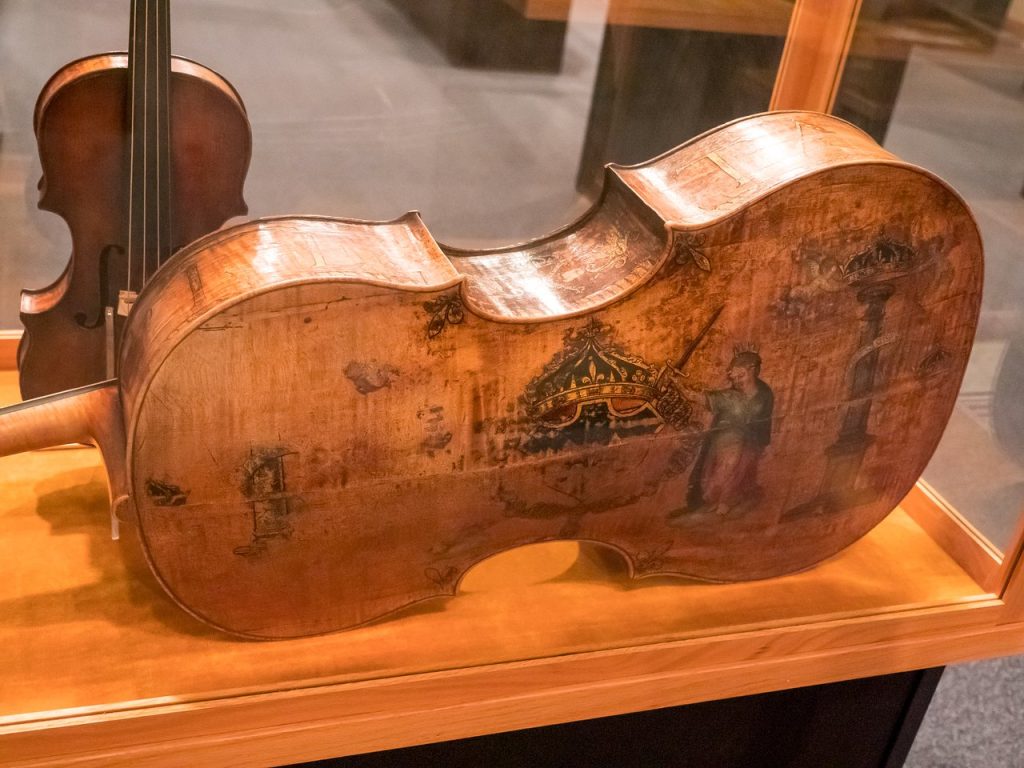The Birth of the Cello
The cello, known for its deep and soulful sound, boasts a history spanning several centuries. In this article, we’ll explore who invented the cello and its evolution. We’ll uncover the brilliant mind behind its creation.
The cello, often hailed as the “king of instruments,” emerged during the early 16th century in Italy. It evolved from its predecessor, the viola da gamba, which had frets and a flatter back. The transition to the cello brought forth several design changes that contributed to its unique sound and versatility.
Who Invented the Cello?
The invention of the cello is credited to the masterful craftsmanship of Andrea Amati, an esteemed luthier from Cremona, Italy, who, along with being a member of the renowned Amati family of violin makers, specifically invented the cello. Amati dedicated his skills to experimenting with various design elements to create an instrument with exceptional resonance and tonal quality.
Amati’s revolutionary contributions laid the foundation for future generations of luthiers, including his apprentice and later rival, Antonio Stradivari. Stradivari refined Amati’s designs and further elevated the cello’s construction techniques, solidifying his reputation as one of history’s greatest violin makers.

Today, the legacy of Amati and Stradivari lives on through their exquisite instruments, which are highly sought after by musicians and collectors alike.
History of the Cello
- Origins in the 16th Century: The cello, short for violoncello, emerged in the early 16th century in Italy. It is part of the violin family of instruments and shares common ancestry with the violin and viola.
- Development from Bass Violin: The cello evolved from the bass violin, with modifications in its size and shape to produce a more versatile and expressive instrument. Andrea Amati, a renowned violin maker, is often credited with crafting some of the earliest cellos.
- Baroque Era (17th-18th Century): During the Baroque period, the cello gained prominence as a solo and ensemble instrument. Composers like Vivaldi and Bach contributed significantly to its repertoire, showcasing the cello’s melodic and virtuosic capabilities.
- Classical Period (late 18th Century): The cello underwent further refinements in design, and its role in classical orchestras expanded. Composers like Haydn, Mozart, and Beethoven integrated the cello more prominently into symphonic compositions.
- 19th Century Romantic Era: The cello experienced a golden age during the 19th century, with virtuoso performers like Luigi Boccherini and later, the legendary cellist Pablo Casals. Composers such as Brahms, Dvorak, and Tchaikovsky wrote iconic cello concertos during this period.
- 20th Century and Beyond: The cello continued to evolve, with innovations in construction and playing techniques. The instrument became integral to various musical genres, including classical, jazz, and popular music. Cellists like Yo-Yo Ma achieved global recognition, contributing to the instrument’s popularity in contemporary contexts.
- Influence in Popular Culture: The cello has made its mark in popular culture, featuring prominently in film scores, rock and pop music, and even experimental genres. Its rich, resonant sound has captivated audiences and contributed to the instrument’s enduring popularity.

After the Cello was Invented
- Shape and Size: The cello underwent several modifications in terms of shape and size. Over time, it acquired its characteristic shape, featuring an elegant, curved body and a resonating soundboard.
- Sound Enhancements: Innovations such as the addition of a bass bar, soundpost, and modern F-holes significantly enhanced the cello’s tonal quality and projection. These advancements allowed for greater expression and depth in the instrument’s sound.
- Bow Development: The evolution of the cello’s bow played a crucial role in expanding its sonic possibilities. The transition from a curved bow to a concave design, coupled with the use of horsehair, revolutionized the instrument’s ability to produce rich and nuanced tones.
Conclusion
The cello’s evolution and the genius of its inventor, Andrea Amati, who specifically invented the cello, have left an indelible mark on the world of music. As this magnificent instrument continues enchanting audiences with its melodic resonance, we remember the ingenuity and artistry that Andrea Amati invested in creating it. The cello remains an emblem of human creativity, capable of evoking emotions and transcending boundaries.


